Have you ever wondered how best to handle your chin? Well, wonder no more! Here’s a quick video to help guide you on your start to safely holding, transporting, and handling your chinchilla.


Have you ever wondered how best to handle your chin? Well, wonder no more! Here’s a quick video to help guide you on your start to safely holding, transporting, and handling your chinchilla.
Well, it’s official: this autumn has been incredibly busy for the human (that’s me!). However, that doesn’t mean that I’ve been neglecting my babies. Life is all about priorities: the people, experiences, and fluffs that are meaningful in your life will rise to the top of your to-do’s and will always be accounted for. So, let me catch you up on some of the fun changes ongoing in the world of LY Chinchillas!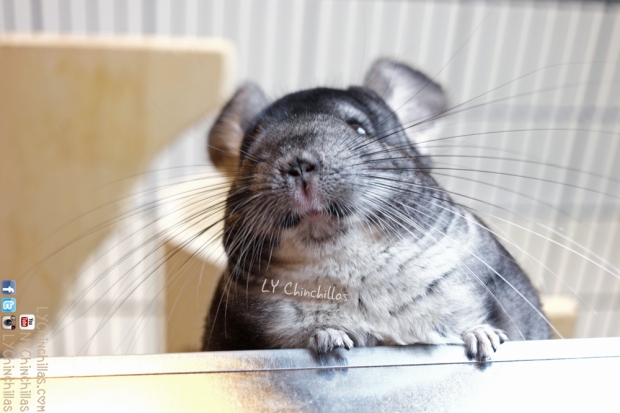
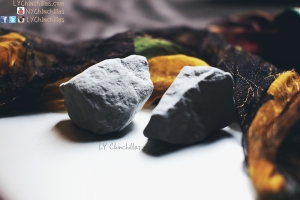
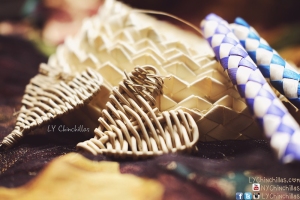
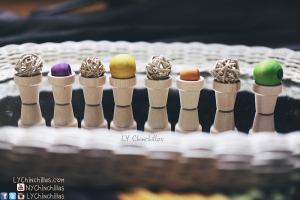
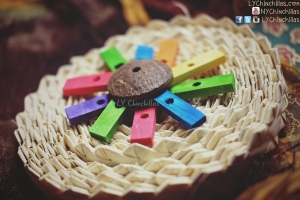 New DIY Goodies: I am a huge fan of DIY when it comes to the world of chinchillas: cages, toys, accessories, sourcing and preparing your own chin-safe wood (a list of safe wood can be found here), litter boxes, cookies, and more! Most recently, we’ve replaced our pine litter boxes, swapped out some older ledges for clean pine, and added in a slew of fun new hanging toys! It’s always great to make your own toys: it’s less costly than buying toys outright and allows you to be as creative as you want. I often dream up toy designs depending on each of my chins’ quirky personalities!
New DIY Goodies: I am a huge fan of DIY when it comes to the world of chinchillas: cages, toys, accessories, sourcing and preparing your own chin-safe wood (a list of safe wood can be found here), litter boxes, cookies, and more! Most recently, we’ve replaced our pine litter boxes, swapped out some older ledges for clean pine, and added in a slew of fun new hanging toys! It’s always great to make your own toys: it’s less costly than buying toys outright and allows you to be as creative as you want. I often dream up toy designs depending on each of my chins’ quirky personalities!
Always in Stock: While not such an exciting ongoing development, it’s important to mention that with chins, there come perpetual costs. Although pellets and hay are not that expensive if you buy in bulk, chinchillas are intellectual and emotional creatures that deserve (and need) a good deal of mental and dental stimulation. That’s why I always have a full stock of apple sticks, cholla sticks, pumice stones, rosebuds, rose hips, marigolds, shredder tape, and other delicious chew/treat options. Over the years, I’ve been able to curate a good balance of their favorite chew selections and make sure to award them for cuteness! This is all, of course, in addition to the plentiful hay and pellets included in a healthy chinchilla diet. Oh – it never hurts to remind everyone that I have two 26 oz water bottles per cage, and at least two extras on hand for replacement just in case. You never know, and water’s one of those fundamental necessities!
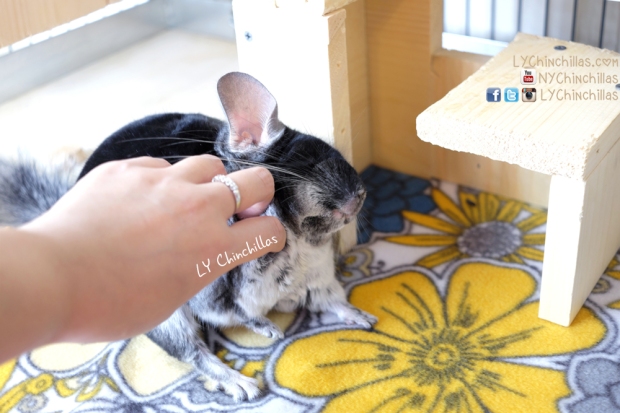 New Fleece: When the seasons change, so doth the fleece. While colors and designs bring a fresh new feel to their cages, it’s also important to discard fleece after a certain level of usage. Typically, when non-pill fleece starts to lose its original texture, that’s the sign to swap. Luckily, fleece ordered online is inexpensive and plentiful, meaning there’s tons of delightful – and affordable – designs to choose from!
New Fleece: When the seasons change, so doth the fleece. While colors and designs bring a fresh new feel to their cages, it’s also important to discard fleece after a certain level of usage. Typically, when non-pill fleece starts to lose its original texture, that’s the sign to swap. Luckily, fleece ordered online is inexpensive and plentiful, meaning there’s tons of delightful – and affordable – designs to choose from!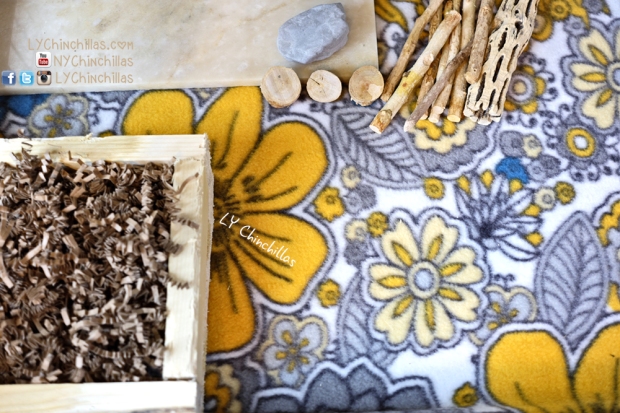
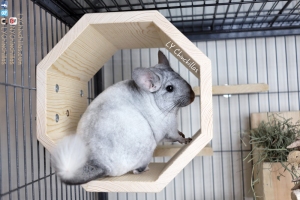
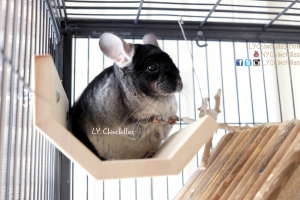
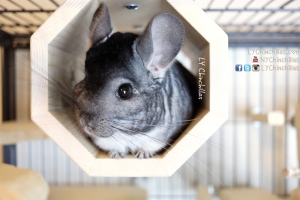 New Accessories: Not only have we re-stocked on some fun hammocks for Muff and Koko, but we’ve also been fortunate enough to have discovered a new chinchilla vendor – Whisking Woodworks! Creator Robyn is a young furniture designer and chinchilla lover in Seattle, WA, and Whisking Woodworks is all about creating unique chin-safe accessories for fluffy friends. Be sure to visit her website and check out the beautifully crafted octagonal furnishings – perfect for the contemporary, modern, or spunky chinchilla! 😛
New Accessories: Not only have we re-stocked on some fun hammocks for Muff and Koko, but we’ve also been fortunate enough to have discovered a new chinchilla vendor – Whisking Woodworks! Creator Robyn is a young furniture designer and chinchilla lover in Seattle, WA, and Whisking Woodworks is all about creating unique chin-safe accessories for fluffy friends. Be sure to visit her website and check out the beautifully crafted octagonal furnishings – perfect for the contemporary, modern, or spunky chinchilla! 😛
As far as existing shelving and ledges, a super helpful tip for a super busy month: if you’re unable to make it out to refurnish your chin’s kiln-dried pine, simply flip your less-than-perfect ledges upside down and re-adhere! You’ll be set for at least a few weeks while you get ready to hit up the local lumber supplier. Over the years, I’ve found it’s much more convenient to buy large quantities of kiln-dried pine in bulk and properly store goods in a dry, clean environment until you’re ready to create some delectable chinjoyable structures! You never know, inspiration can hit you like a 50 lb. bag of blue cloud dust, so the basics are great to always have on hand.
Holiday Photos: Yes, it’s almost that time of year again, where the elves of the world ready their cameras for prime-time-chinchilla-photoshoot time!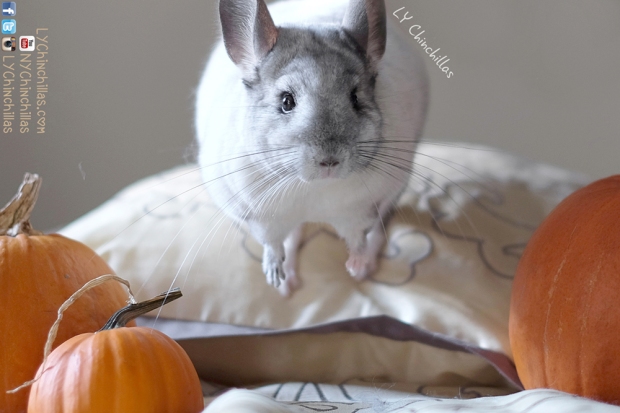 While we’ve only managed to grab a few pumpkin and autumn-themed captures, we are keen on remaking horror movies and having some spooky fun (click the link – you won’t be disappointed by Mitty’s acting debut)! But definitely, be on the lookout for some Christmas-themed goodness headed your way, direct from the five flooferoos! 🙂 Have a wonderful month, fluffs and fluff-lovers!
While we’ve only managed to grab a few pumpkin and autumn-themed captures, we are keen on remaking horror movies and having some spooky fun (click the link – you won’t be disappointed by Mitty’s acting debut)! But definitely, be on the lookout for some Christmas-themed goodness headed your way, direct from the five flooferoos! 🙂 Have a wonderful month, fluffs and fluff-lovers!

LY Chinchillas Treat Donation
Donate healthy, delicious treats to LY Chinchillas to help keep our content going!
$5.00
Over the year, we’ve had some great topics and fun things to write about! Located on our Favorite Topics page, we wanted to share with you our most poignant and important posts that have helped out our furry friends and their owners the most. The entries are linked so you can click through and read whichever article you find most helpful!
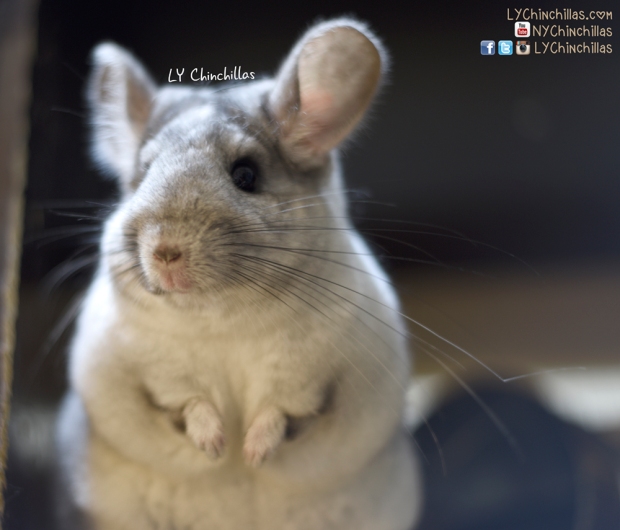
What’s a Chinchilla?
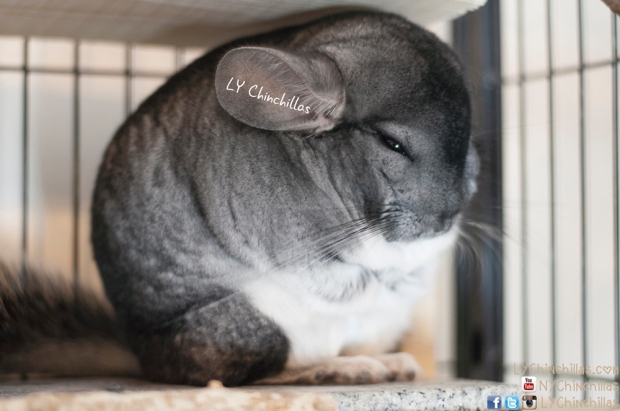
Chinchilla Health
Chinchilla Care
Chinchilla Food
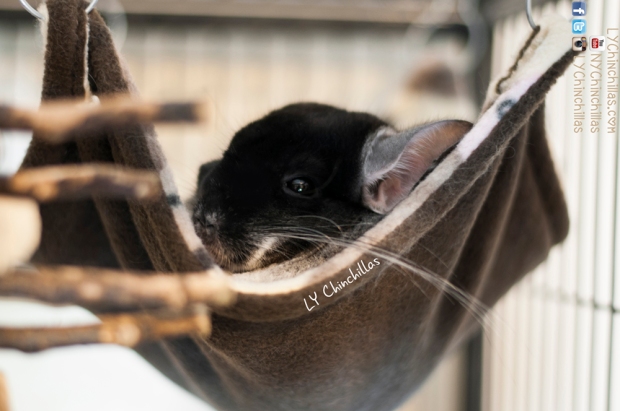
Custom Chinchilla Cages
Chinchilla Cage Accents
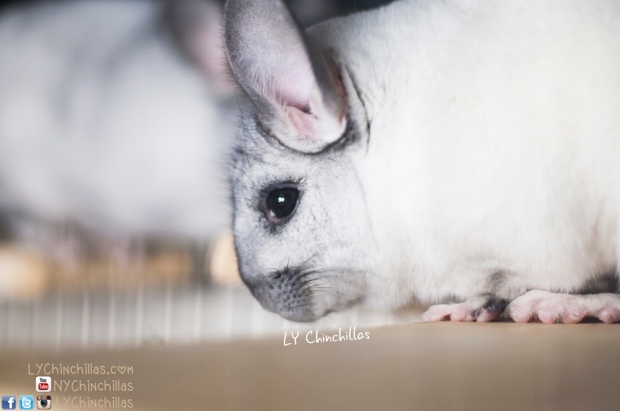
Chinchilla Playtime
LY Chinchillas: About Us!
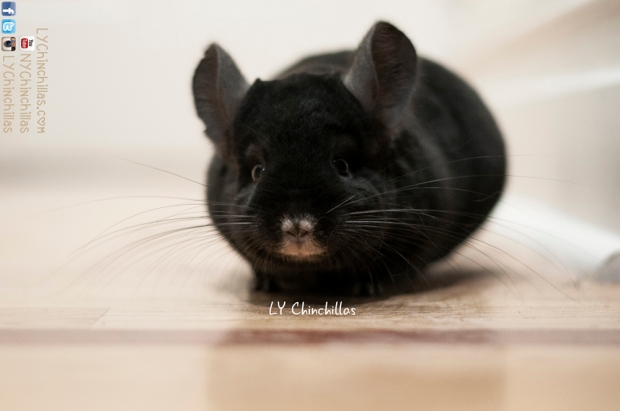
As always, don’t forget to reach out and stay in touch with LY Chinchillas on social media! We’re on YouTube, Facebook, Instagram, Vine, and Twitter!
We’ll be sure to update the Favorite Topics page as time goes on, so don’t forget to leave us some commentary and follow the blog! 🙂

In tandem with recent posts about Ferret Nation Cages and How To: Build a Custom Chinchilla Cage, this post is all about cage details – all the necessary components that help make your chin’s cage feel like a meaningful, functioning home! Although there are online vendors for listed accessories, all items that are realistically able to be made at home have been described in a DIY manner.

Platforms & Ledges: I suggest keeping platforms 4-5″ wide, installed under 6” apart height-wise for safety. Any higher, and a fall could potentially hurt your chin. And don’t forget ledges – fun shapes for corners, sides, and all around. Sizes can vary, from 3″ upward. The hardware part is simple: screws, washers, and a drill will keep your items snug and secure.
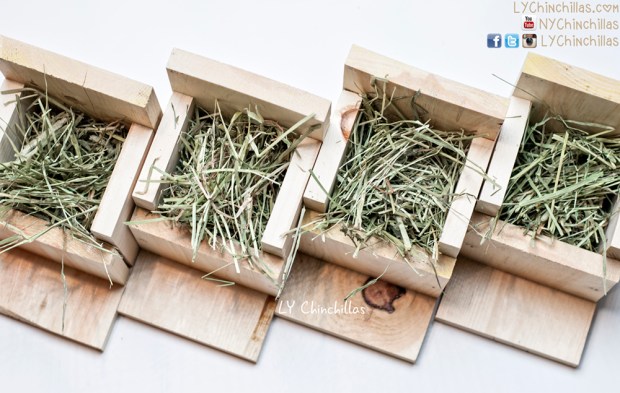
Hay Feeders: Hay is an integral part of any healthy chinchilla diet, and it gets everywhere! Our cages have DIY hay feeders, complete with a standing perch for easy eating. Connected with two sturdy hooks, these feeders are a chin favorite, adhere to horizontal bars with ease, and keep the mess minimal!
Food Bowls: We recently switched from bottom-heavy bowls to stainless steel bowls that adhere directly to cage bars. It’s been a wonderful transition, as the stainless steel bowls are sleek, safe, attractive – and most of all, easy to use.

Litter Boxes: Read this post all about DIY litter boxes and litter training! Litter boxes can be a tidy addition to your chin’s cage, encouraging your pets to maintain their space and keep clean. Of course, not all chinchillas can be litter trained, but it never hurts to try.
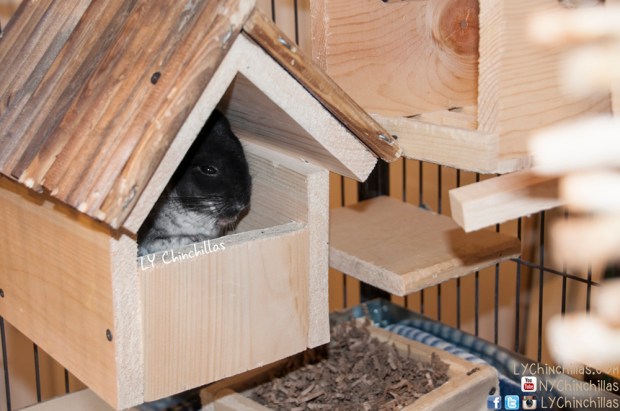
Huts & Houses: The fluffs love hiding houses, tight corners, and crunching down on the very infrastructure they inhabit. The best way to inhibit this type of behavior is by encouraging it in a safe, healthy manner! Our hideaways are made from kiln-dried pine and offer privacy-seeking chins a lovely respite from the craziness of their peaceful environments (because we all know being a well-cared-for chinchilla is exhausting). 😛

Stone Cooling Tiles: Our chins prefer marble or granite cooling tiles; they are a great accessory for the active buggers who dart all over their cages, working up some heat! The tiles offer temporary relief for warm tummies, but only act effectively if hand-in-hand with low temperatures or air-conditioning.

Hanging Toys: Hanging toys are quite simple to make, and shockingly fun to watch as your chins swing them from side to side in impatient demolition attempts. Some drilled apple sticks, chunks of kiln-dried pine, and pumice stones make for a really great time – especially for the attention deficit types!

Hammocks and Tubes: While not every chin enjoys hammocks, a lucky few really do love lounging in comfy floating fleece blankets. There’s nothing like a softly swinging sleepy chinchilla to bring a smile to your face! Tubes are also great accessories, offering a round retreat for your fluffballs. I use galvanized steel ducts, which have rounded steel that can be used safely without fleece coverings. Other tube options include PVC or cardboard tubes with snug fleece covers to prevent harmful ingestion.

Cuddle Buddies: Fleece teddies can be perfect for solo chinchillas! As long as the cuddle buddy has fine stitching and good construction, your chin will be snuggling up next to their new friend (or tossing it around) in no time.
Water Bottle: Water bottles are the bane of my existence. As I’m living in the city, I do not have an adequate setup for a water pump system. So, I run through glass water bottles every few months. I always have two water bottles in each cage, a 32 oz. and an additional 16 oz., just in case. Currently, I use Kaytee, Living World, and Lixit (although I’ve tried more than a handful of brands), and simply cross my fingers. I have never understood why water bottles do not have any type of manufacturer’s warranty, as they are often faulty and fail to stand the test of time.

Running Wheel: Although chinchillas do not require a wheel, it is nice to have one for exercise purposes. My chins have a running wheel in a separate playtime cage, which is an excellent way to encourage a weekly allotment of exercise while teaching them to manage their stress when being introduced to different environments.
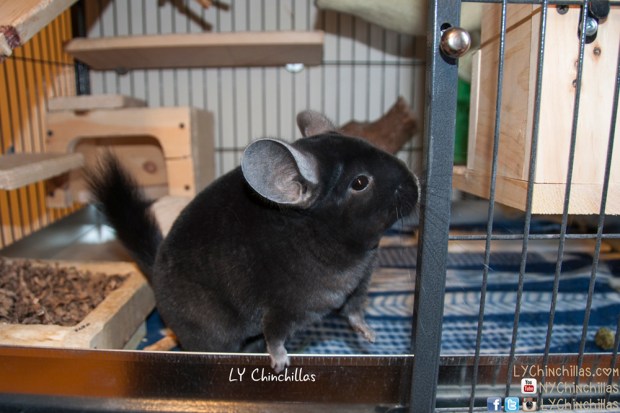
Fleece: The safest fabric for chins, fleece is a good way to cover up harmful plastics in your cage or line the bottom of your cage with a pretty pattern. While fleece is not necessarily easier to clean than bedding, it does help make your chin’s home more personal. If your chin is litter trained, I suggest washing fleece every 2 weeks with a hot water and lemon juice/vinegar mixture. If your chin is not litter trained, fleece should be washed weekly to prevent urine buildup. It’s important to note that while most chins do not eat fleece, some will try! If that’s the case, then fabric should be removed immediately to prevent consumption.

Custom Steel Pans: Galvanized or stainless steel pans for your chin’s cage are an awesome investment – they are easy to manage and long lasting with proper care. Swapping out plastics for steel is a simple way to prevent harmful ingestion, blockage, or impaction that can come with gnawing malleable plastics.

As always, try to incorporate safe woods into your chin’s environment, and understand the importance of choosing wood over plastic. Be sure to always have an air-conditioning unit (or two!) during warm months, keep a regular dusting routine, and monitor your chin’s weight for changes in consumption in order to catch early warning signs of illness. 🙂


LY Chinchillas Treat Donation
Donate healthy, delicious treats to LY Chinchillas to help keep our content going!
$5.00
This week’s post goes back to basics, but dust baths are a fundamental and important grooming topic to touch upon. There are always a plethora of questions that curious animal lovers or new chinchilla owners ask (you can find a complete one-stop post about Chinchilla Basics 101 here), and one of the major grooming questions always pertains to dusting! Not only is it necessary, it’s vicious, voracious, messy, wild, and scurrying adorable!

What is a Dust Bath? A dust bath is a cleaning technique used by chinchillas (and other select avian and mammalian species). This type of waterless bathing utilizes dust or fine sand.
Why Do Chinchillas Need to Dust? Since chinchillas have incredibly dense fur and originate from a cool, dry climate in the South American Andes, their fur is not meant to be immersed in water. Water is considered harmful and any immersion could cause fur loss, stress, fungal infections, and lead to overheating. Dusting is important for chinchillas to stay clean, remove any impurities from their fur, and prevent matting. Dusting helps remove unnecessary oils and dirt, and also serves as a form of temperature regulation, meaning it assists in keeping your chin cool and dry by preventing a buildup of heat-trapping irregularities (dirt, oil, heaviness, impurities).

How Often Should Chinchillas Dust? Dusting frequency varies on humidity, season, and some other factors. Typically, the range goes from 2 times a week to every single day. In areas that are humid and during warm seasons, the more frequent the dusting should be. As long as your chinchilla doesn’t have any dry skin problems, it’s safe to dust them daily. I dust my chins every day because 1. we live in an area of fluctuating humidity 2. they don’t have any dry skin issues and 3. they all love to dust. We’ve incorporated it into our daily weighing routine.
How Long Should Chinchillas Dust For? 5-10 minutes is a great amount of time. In my experience, they won’t dust all at once; oftentimes they’ll dust, prance around, shake it off, dust and repeat. Makes for quite a lovely mess!
What Type of Dust Should I Use? I recommend Blue Cloud Dust, which is a very fine natural powder mined from the Blue Cloud Mine in Southern California. The dust has a very high standard of quality, shakes out of chinchilla fur, and also carries a natural, clean scent. This dust can be found in bulk online through various chinchilla vendors or in smaller quantities at commercial pet stores.
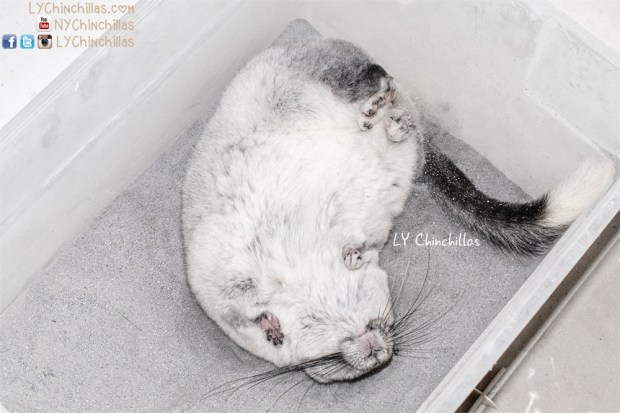
How Much Dust Per Session? I use 1-2 cups of dust and refill as needed.
Where Should I Dust My Chinchilla? I suggest a confined area that would be easy to clean and has ventilation. In my experience, bathtubs and bathrooms work great and have minimal clean-up time. It’s important to note that dust goes flying, gets everywhere, and it will be a struggle to maintain a dust-free environment, so keeping the dust bath far from electronics would be beneficial.

What Type of Dust Bath Container is Best? Of course, glass, ceramic, or metal is great – the most important factor being that the container won’t fall over under the weight of massive chinchilla rolls. Personally, since I’m constantly monitoring them during their dust sessions and do not keep a dust house in their cages, I use an open plastic bin that measures 16″ x 12″ x 7″ and for the most part, I leave the top off or partially covered to minimize dust-plosions. I’d suggest staying away from plastics in general, unless you are present and watchful in monitoring to prevent potential chewing. There are also a plethora of other choices, both for outside and inside of the cage usage – some chin owner favorites include bread pans, smaller cages, and large bowls with sturdy bottoms.

Can I Reuse Dust? For the most part, yes. As long as the quality of the dust is the same, it’s safe to continue using and simply adding in some new dust each session. When chinchillas leave behind some poop, it’s easy to use a scooper or strainer to remove them from the dust. Sometimes, chins will urinate in the dust after they’re done to mark their territory. In those cases, I recommend spot-cleaning to remove the affected dust, pouring out the clean dust, and cleaning out the container before using again (it may be easier to just toss it all out, clean the container, and add new dust). Also, it’s time to change the dust if you notice dust particles clumping together due to retaining moisture over time. My mosaic girls will also leave behind loose strands of their constantly shedding fur, so if I begin to see those, I’ll change out the dust.

Chinchilla Dust Hacks! Does your chinchilla have a light-colored mutation or have urine stains on their furry behinds? You can add a tablespoon of corn starch to their dust bath to help lighten up those stains! Also, you can use a damp cloth or unscented baby wipe to clean stained areas, making sure that you are cleaning the surface areas only and monitoring them until their fur is fully dry.

Can Chinchillas Take Water Baths? As long as your chinchilla is in good health, the answer is no: they shouldn’t. However, certain extenuating health issues may allow owners to bathe their chinchillas in water – please consult a trusted exotic vet and/or trusted chinchilla savants to determine that a water bath is necessary prior to making this decision. Please note that urine stains are no a reason to bathe your chin in water, as there are existing solutions that do not put your chin’s health in harm’s way unnecessarily.
How Should I Store Chinchilla Dust? You should store your dust in an airtight container and keep it in a cool, dry place to ensure maximal usability!

Happy dusting! Stay tuned for more chinformative chinformation! 🙂

LY Chinchillas Treat Donation
Donate healthy, delicious treats to LY Chinchillas to help keep our content going!
$5.00